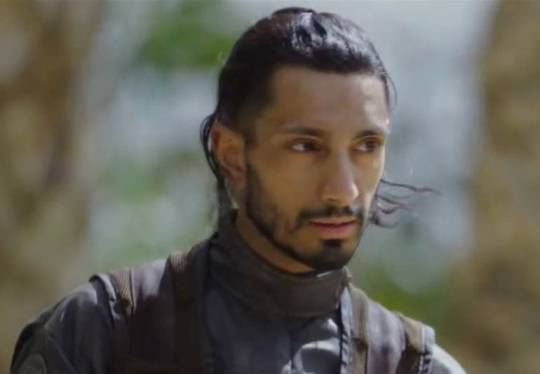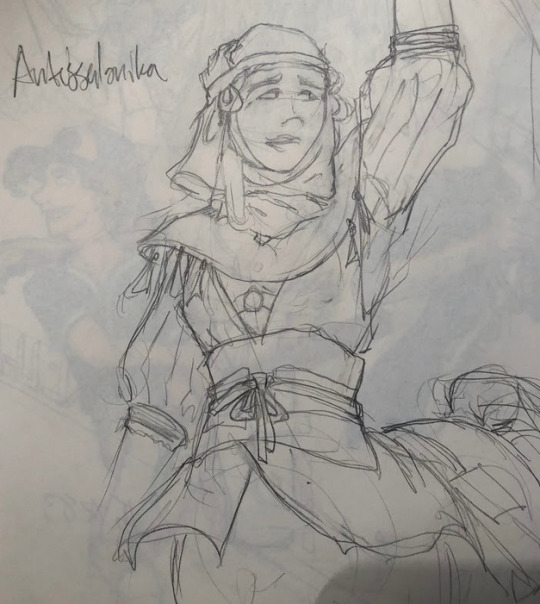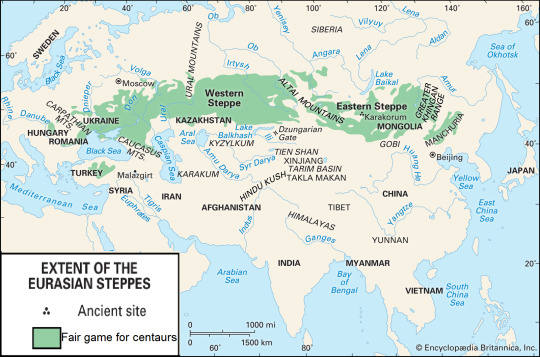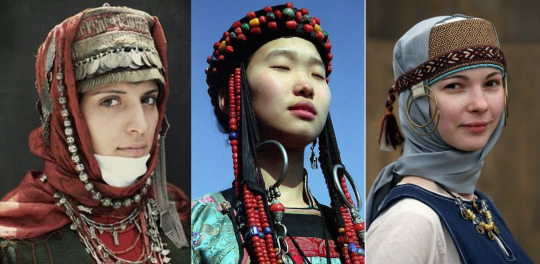#what geographic reason fantasy races inhabit
Explore tagged Tumblr posts
Note
Hi!!! I'm just a quarter of a way through A Strange and Stubborn Endurance, and was so happy to find you have a blog!! It's been a lovely read, I love the prose and the world building, the normalization of queerness and how it would look in a fantasy setting on a functional level. I really appreciate that the inclusivity in queerness doesn't immediately make Qi-Katai an idyllic paradise and there's a level of groundedness to how things work.
I can't wait to finish the duology! I was wondering if you had any specific race/POC rep in mind when writing Vel and Cae, because just based on description, I've been picturing Vel as potentially South Asian and Cae as perhaps East Asian? I'm not completely sure. Would love to hear your thought process!
This is an interesting question, because while representation of all kinds is relevant to SFF stories, I don't think it makes sense to analyze secondary settings in quite the same way we do those which, by whatever logic, are considered an extension of the real world. In the case of racial representation, the reason for this is that race is foremost a social construct rather than an immutable biological category: it's a word we've looped around the (predominantly visual) expression of certain traits with reference to a (perceived) shared cultural, religious, geographic and/or historical framework, and as such, even when a given fictional realm is (arguably or explicitly) based on a real-world setting, I'd argue that the act of redrawing the cultural context means implicitly reconsidering our associated racial assumptions, too. For instance: Cae is described as having bronze skin, brown eyes and straight black hair. In the real world, this could plausibly describe a person from any number of backgrounds, because none of these traits, either singly or collectively, is unique to a given group. But for precisely that reason, if I gave Cae's description to a character from a story set in the real world, there'd be a reasonable expectation that I specify their heritage, not just so the reader could picture them better, but because knowing whether they were Thai or Native American or Turkish would impact other aspects of their characterisation. Cae, however, is Tithenai, and Tithena is neither a real place nor based on a specific real-world culture, which means that, regardless of whether you picture him as resembling someone who's Thai or Native American or Turkish or any other thing, the cultural underpinnings of those racial categories are irrelevant to the text, except inasmuch as you might also choose to imagine other aspects of Tithena - the clothes, the food, the architecture - as being similar to that particular real-world culture. But, by the same token, you might just as easily choose to imagine these things as disjunct, or to forgo overt real world comparisons entirely. How you build the visuals of the story in your mind palace is up to you! But what I'm trying to get at is that "specific race/POC rep" is not a given in this milieu, because the relevant categories are all ultimately derived, not from immutable biological separatism, but real-world social distinctions born of centuries of geopolitics, migration and cultural intermingling that don't necessarily have meaningful analogues in an invented setting. Even highly oversimplified terms like "white" and "black" are ultimately products of a specific cultural discourse, and while we might employ them of necessity, we should still keep in mind the fact that their parameters are no more fixed than their implications are neutral or their usage universal.
At the same time, however, there are unequivocally many instances where authors intend the inhabitants of their secondary worlds to be firmly associated with specific real world analogues, even at a granular level. Whether by overt implication or authorial word of god, these are stories and settings which, despite having no in-world connection to any version of our Earth, are still presented as spiritually deriving from it, as though possessed of a sort of cultural haecceity. Which is, I hasten to add, entirely fair; and particularly given the strong historical bias towards white Eurocentrism within fantasy as a genre, the more recent boom of stories that take their inspiration elsewhere is entirely justified, to say nothing of being wonderful. It's just that, as a general point of principle, I think it's important to acknowledge that race, by virtue of being socially constructed, does not have to retain the same boundaries and categorizations in a secondary world that it does on Earth. While readers and creators alike are still inevitably influenced by and thus beholden to the real world optics of race - meaning, to give just one example, that "But it's a fantasy world!" is not a get-out-of-jail-free card for uncritically replicating a pernicious racial stereotype - it doesn't therefore follow that all secondary world fantasy characters and cultures must have a set real world analogue; that we cannot ever imagine them fluidly. All that being so, therefore, you're absolutely free to imagine Vel as South Asian and Cae as East Asian! I do not have any immutable facecasts for either of them, and am delighted with all permutations. However, when A Strange and Stubborn Endurance was first released, Tor commissioned this gorgeous artwork of Cae and Vel by Nicole Deal, for which I was asked to provide some vibes-based visual references for the artist. My choices for Vel were Mika Zibanejad,

Damiano David

and Riz Ahmed;

for Cae, it was Booboo Stewart

and Paing Takhon.

None of these are definitive, but they're certainly fun to look at, and either way, I hope this answers your question! :)
#foz answers things#tithenai chronicles#a strange and stubborn endurance#all the hidden paths#facecasts#fantasy#worldbuilding#romantasy#queer romantasy#velasin#caethari
30 notes
·
View notes
Text
22:50 5/1/22
Centaur Lore as requested! ty for asking @ernikerr (also I prommy I haven’t been ignoring your message I just didn’t get the chance to put this post together until now. I’m just going to give a broad overview of some of my inspirations and motivations in this post, I’ll dive more into it in other posts because this is already going to be long lmaooo
This lore was originally for a player driven ttrpg that @nolandspy was dm’ing, but as is the tendency I got up to my neck in ideas and couldn’t stop spinning about horses and also cultural anthropology so here we are

This is the character I played! Her name is An-tessalonika, or just Tessa for short. Her having just a real world ass name was mostly played for laughs, I chose the name very deliberately. I’ve decided the centaur naming system goes like this:
[honorific]-[given name][surname]
So her given name is Tessa, she’s of the herd Lonika, and her honorific is An. I’ll get more into the honorific system when I’ve actually figured out how I want to do it in a later post.
There are 4 herds (Lonika, Trakehn, Abarda, and Marwai; again, more info to come) and each hail from a different part of the highlands. As this isn’t part of any specific world I don’t really have a map to point to where each herd is geographically, but think Asian steppe. A lot a lot a LOT of the visual design is based on western asian cultures (think like Kazakhstan, Mongolia, Kyrgyzstan, Southern Siberia that whole area)

I think the anatomy of centaurs alone sort of lets you infer a lot about what their culture would be like. They aren’t going to be able to live in cities, or at least not any that a humanoid would recognize. Just from playing as a centaur, even though most of the campaign was being out on adventures, my character had a really hard time dungeon crawling, walking up stairs, getting supplies from shops etc. With that in mind, I reasoned that centaurs probably live away from other other humanoids just because of differing needs for physical infrastructure. So it made sense to make them nomadic, (which is also why western Asian cultures were such a big influence- the Mongols were known for their horsemanship, and live in a place that horses are specifically adapted to)
I had an idea early on that one of the most notable features of centaur culture was their headwear. This is a take that developed after seeing how gorgeous some of the traditional garments of this area are, and before I realized that they’d also likely cover their hair because they don’t want it whipping around in their face as they run. I also borrowed the idea from many cultures around the world about the sanctity of growing out your hair, and only cutting it symbolically. This way I could sort of incorporate all of these ideas in one, and have an excuse to draw and research beautiful scarves and head pieces.

(Left to right, Armenian, Buryat, and Russian ? I did some quick internet detective work but and google translate tells me that it’s from a collection of photos taken at (what I’m pretty sure is) a Russian ren fair essentially. Link to the original blog post about the fair HERE if anyone can read russian)
All of these ladies are from very different cultures but are all generally from places (geographically) where centaurs would be good at living, which is the main principle guiding me in building out centaur culture
I think there’s not enough hair coverage rep in fantasy generally, and I’m not entirely sure why, (At least in the US, I can’t speak for other places, I have a sneaking suspicion that it might have to do with mounting islamophobia as fantasy started coming to public attention in the 80s/90s/2000s hmmm) Headwear has been a feature of clothing since society existed and despite the general trend away from it in the modern day, I think that it should still be considered when designing fantasy societies
#fantasy#centaur#centaur au#dnd#homebrew#but the real world equivalent to the time period I'd want to set this in is like 15th century-ish?#i need to come up with a name for this project because there's definitely other races in the world#it's not that the story is about centaurs its that they don't know other people exist yet#i was actually talking about it with nolandspy for a while#what geographic reason fantasy races inhabit#cause centaurs the answer is easy right like grassland steppe done easy#but like why are elves in the forest?#sure long legs and big ears are pretty good for a forest#but you know what they're even better for?#savannahs#think like jackals and gazelle#<<those thoughts were mostly noland's by the way#i was arguing for more aquativ elves#but i think i was thinking of the zora's anatomy
8 notes
·
View notes